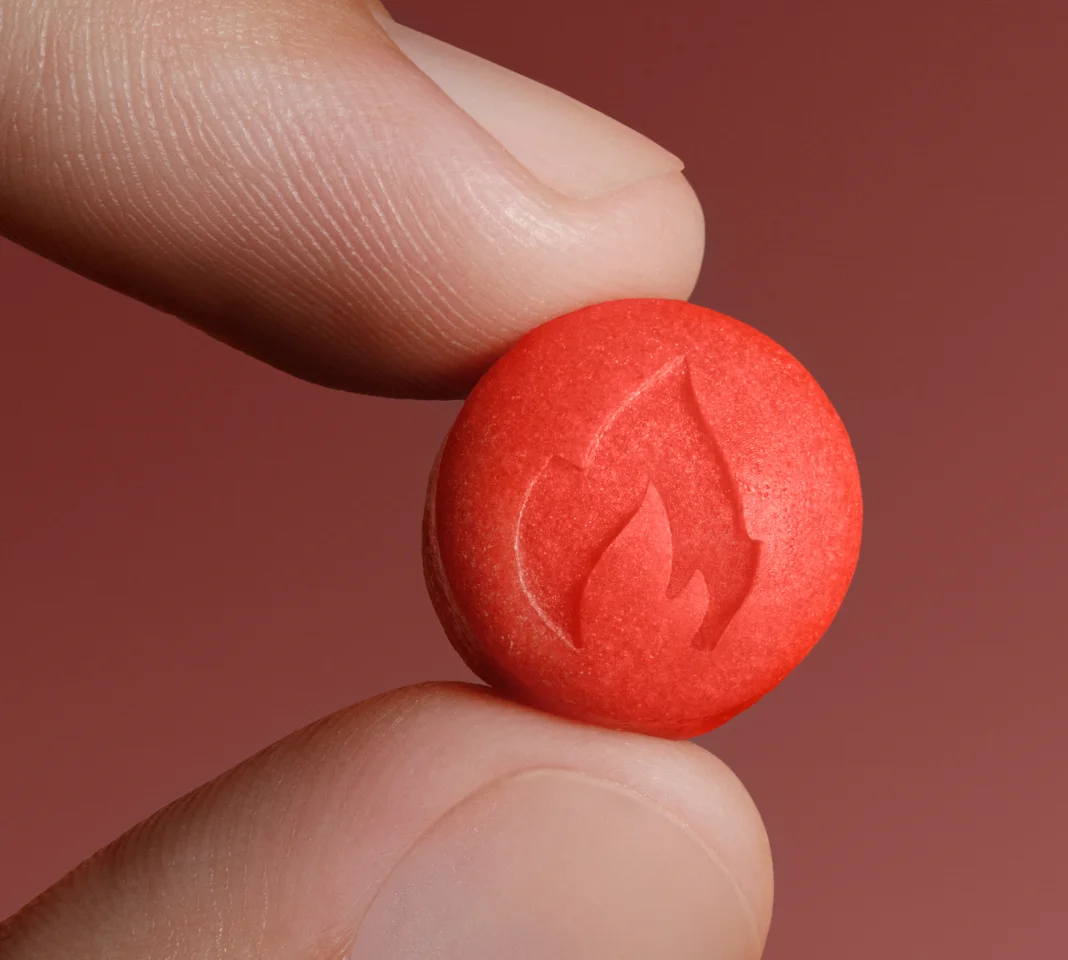Here's what we'll cover
Penis size can be a sensitive topic, with some men wishing there was something they could do to make their penis bigger. A quick online search can result in many supplements and suggestions that promote an increase in penis size, but do any of them work? More specifically, can testosterone increase penis size? Keep reading to find out.
Can testosterone increase size?
The short answer is: yes and no.
Testosterone is a sex hormone that plays a significant role in many processes in the body, including penis size—that is, until a biological male finishes puberty. From infancy, testosterone helps the testicles move down into the scrotum, and in puberty, testosterone is responsible for deepening a person’s voice, growing underarm and pubic hair, building muscle mass, producing sperm, growing the testicles, and yes, growing the penis (Nassar, 2022).
Typically, the penis grows in length and width (aka girth) during puberty. This growth usually ends by the time a person reaches the physical maturity of adulthood (Breehl, 2022).
So, yes, testosterone can increase the size of the penis, but really only before and during puberty. As an adult, after the penis has stopped growing, taking testosterone will not affect penile length. It can however, potentially help treat other underlying conditions such as erectile dysfunction, if low testosterone levels (hypogonadism) are to blame.
What to know about penis size
The normal size of a penis can vary, and a smaller flaccid penis size doesn’t necessarily correlate with the erect penis size. Every man’s penis is going to differ in size, and most will fall in the normal range. However, some conditions during the prenatal period or factors lowering testosterone levels during puberty could make the size of the adult penis smaller (Slade, 2021).
In a condition called micropenis, the size of the stretched penis is much smaller than average, with an official diagnosis of 2.5 standard deviations below the average size. If hormones while in the womb aren’t where they should be after the 12th week of pregnancy, a child can be born with a micropenis. The use of testosterone injections or topical testosterone during infancy can be used to treat micropenis (Alsaleem, 2022; Hatipoğlu, 2013).
How do you want to improve your sex life?
Stronger erections
Longer lasting erections
Get hard, faster
All of the above
Can you make your penis bigger?
It’s important to remember that if your penis functions properly, it’s fine the way it is. Meaning, if you can get and maintain an erection, are able to continue sexual activity to the point of ejaculation, and have a healthy sex drive, you don’t need to worry about penis growth.
If an increase in penis size is a concern, keep in mind that many of the products marketed for penis enlargement are not actually going to help. Products such as penis pumps, which are vacuum devices that help draw blood into the penis, and penile implants, which are surgically implanted into the penis, are typically used to treat conditions such as erectile dysfunction (ED) (Sooriyamoorthy, 2022). These products can potentially cause side effects if not used properly, and they shouldn’t be used for penis enlargement.
Some people elect to undergo cosmetic surgery to increase their penis size. As with any procedure, talk to your surgeon about the risks and benefits to determine whether this option is right for you (Wilson, 2022).
If you have concerns about your penis size or sexual function, it’s important to talk to your healthcare provider to get medical advice on the situation. They may want to check your testosterone levels, get a medical history, and maybe perform a physical exam to see if anything is going on medically that can contribute to your symptoms. If you have low T levels, along with other symptoms (like low libido or excess body fat), your provider may decide to treat you with testosterone replacement therapy—just don’t expect it to impact your penis length.
DISCLAIMER
If you have any medical questions or concerns, please talk to your healthcare provider. The articles on Health Guide are underpinned by peer-reviewed research and information drawn from medical societies and governmental agencies. However, they are not a substitute for professional medical advice, diagnosis, or treatment.
References
Alsaleem, M. & Saadeh, L. (2022). Micropenis. StatPearls . Retrieved on Nov. 30, 2022 from https://www.ncbi.nlm.nih.gov/books/NBK562275/
Breehl, L. & Caban, O. (2022). Physiology, puberty. StatPearls . Retrieved on Nov. 30, 2022 from https://www.ncbi.nlm.nih.gov/books/NBK534827/
Elist, J. J., Valenzuela, R., Hillelsohn, J., et al. (2018). A single-surgeon retrospective and preliminary evaluation of the safety and effectiveness of the Penuma silicone sleeve implant for elective cosmetic correction of the flaccid penis. The Journal of Sexual Medicine , 15 (9), 1216–1223. doi:10.1016/j.jsxm.2018.07.006. Retrieved from https://pubmed.ncbi.nlm.nih.gov/30145095/
Hatipoğlu, N. & Kurtoğlu, S. (2013). Micropenis: etiology, diagnosis and treatment approaches. Journal of Clinical Research in Pediatric Endocrinology , 5 (4), 217–223. doi:10.4274/Jcrpe.1135. Retrieved from https://www.ncbi.nlm.nih.gov/pmc/articles/PMC3890219/
Nassar, G. & Leslie, S. (2022). Physiology, testosterone. StatPearls . Retrieved on Nov. 8, 2022 from https://www.ncbi.nlm.nih.gov/books/NBK526128/
Slade, A. D., Christiansen, A. R., Keihani, S., et al. (2021). Stretched penile length and its associations with testosterone and infertility. Translational Andrology and Urology , 10 (1), 49–55. doi:10.21037/tau-20-788. Retrieved from https://www.ncbi.nlm.nih.gov/pmc/articles/PMC7844491/
Sooriyamoorthy, T. & Leslie, S. W. (2022). Erectile dysfunction. StatPearls. Retrieved on Nov. 30, 2022 from https://www.ncbi.nlm.nih.gov/books/NBK562253/
Wilson, S. K. & Picazo, A. L. (2022). Update on the Penuma® an FDA-cleared penile implant for aesthetic enhancement of the flaccid penis. International Journal of Impotence Research, 34 (4), 369–374. doi:10.1038/s41443-021-00510-y. Retrieved from https://pubmed.ncbi.nlm.nih.gov/34987181/












